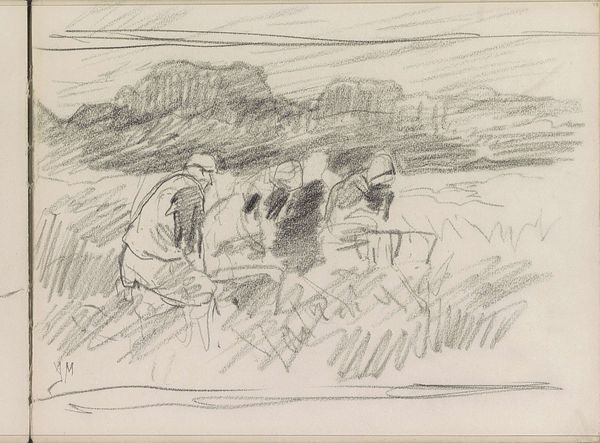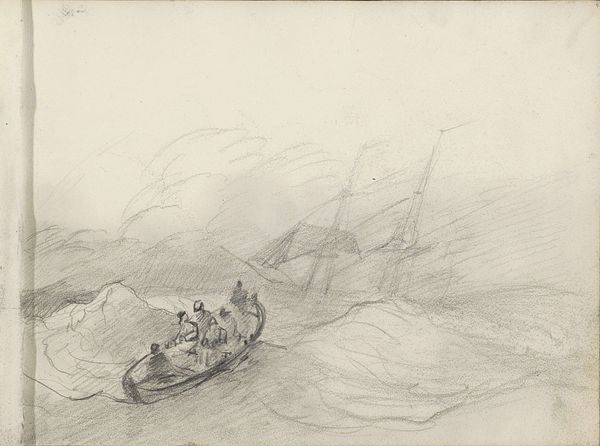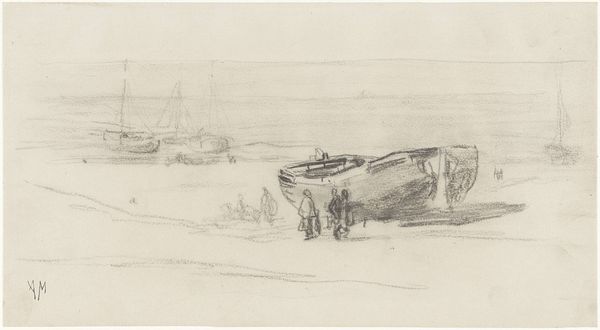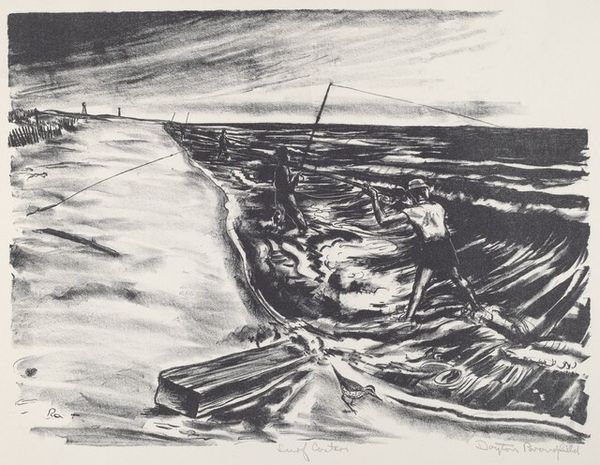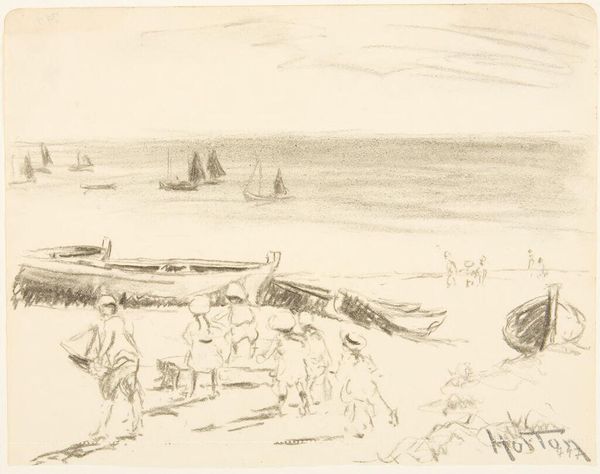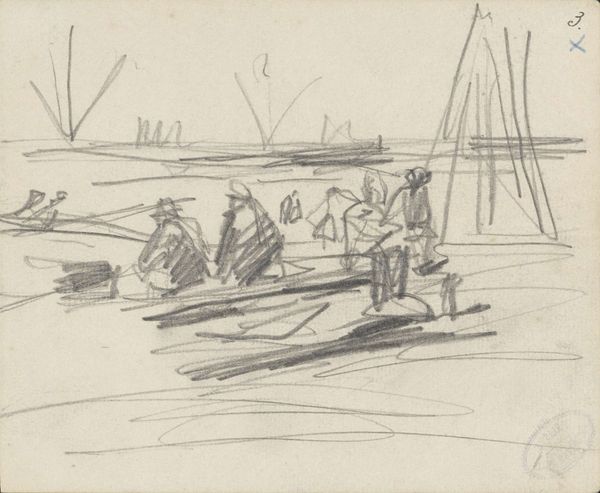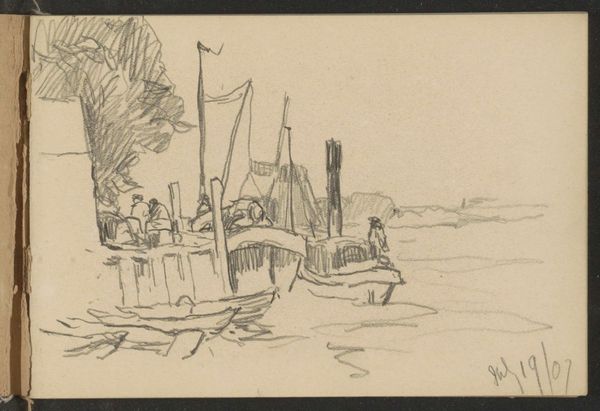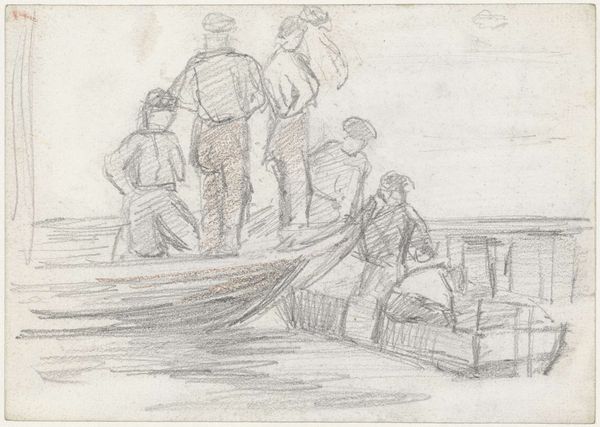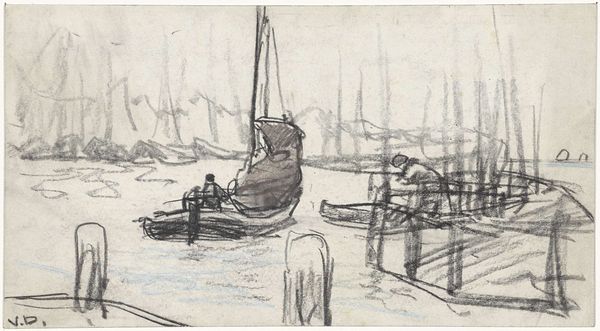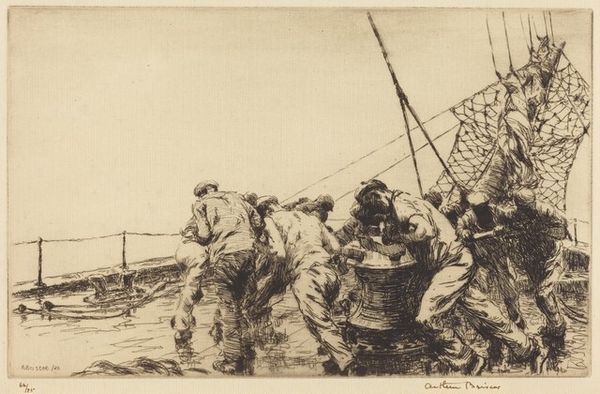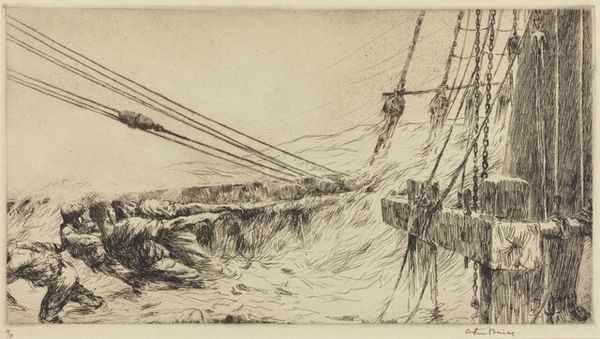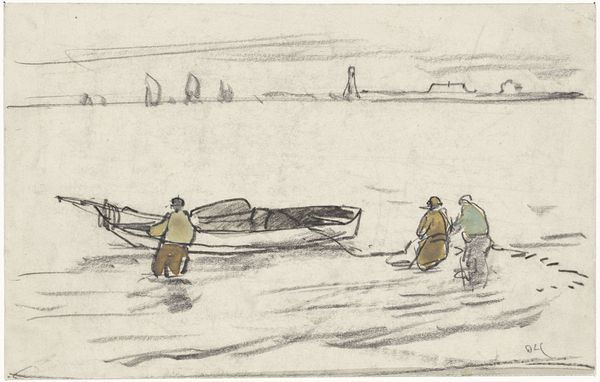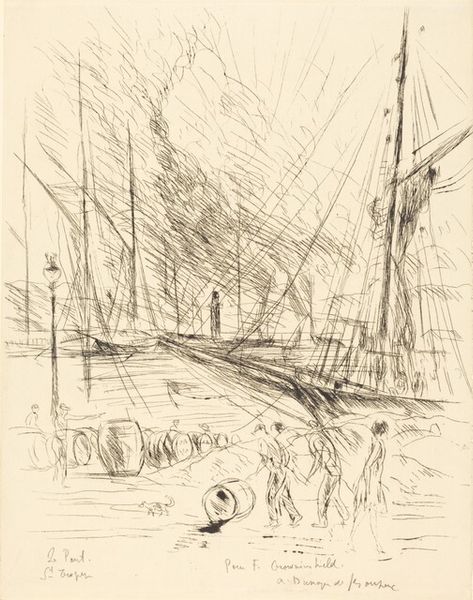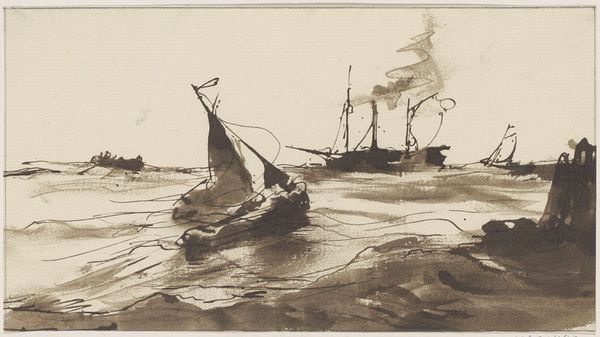
Copyright: Public Domain: Artvee
Editor: This is Jean-Louis Forain’s drawing "Two Soldiers in a Trench," created sometime between 1914 and 1919. The somber grays and blacks really capture a sense of bleakness, and I’m struck by how the soldiers seem both protected and trapped by the trench. What symbolic meanings do you see at play here? Curator: It's potent, isn't it? The trench itself, etched with graphite, speaks volumes. Think of it not just as a military necessity, but as a potent symbol of division, entrenchment. And look at the figures. They are masked in shadow, their humanity diminished, almost swallowed by the visual weight of the looming sky. Does the landscape itself seem to participate in their emotional state? Editor: Absolutely. That heavy sky presses down, almost like a physical manifestation of despair. So the artist isn’t just showing us a scene, but giving form to the emotional weight of war. The sky's dark presence looms ominously over them, contributing significantly to the overall oppressive mood of the scene. Curator: Precisely. And what of the way the figures relate to one another? There’s a sense of isolation, even in shared proximity. One hunched figure obscures his comrade with shadows, literally, visually. The pencil almost seems to carve out the space *between* them. Editor: So, beyond the historical context of World War One, we’re also seeing a comment on the psychological impact of conflict—the isolation, the suppression of self? Curator: Indeed. Consider how frequently the trench appears in Great War imagery. How the image can tell us something profound about a society that perpetuates war. Could this scene speak about the more personal tragedies or broader concerns? Editor: It definitely makes you consider the individual experiences within that larger historical narrative. I hadn’t thought about the shared space of the trench contributing to individual isolation, it is an evocative representation of psychological entanglement. Curator: Images, especially of war, are a powerful vehicle of memory and of feeling. They can carry collective and individual narratives, prompting dialogue across time.
Comments
No comments
Be the first to comment and join the conversation on the ultimate creative platform.
